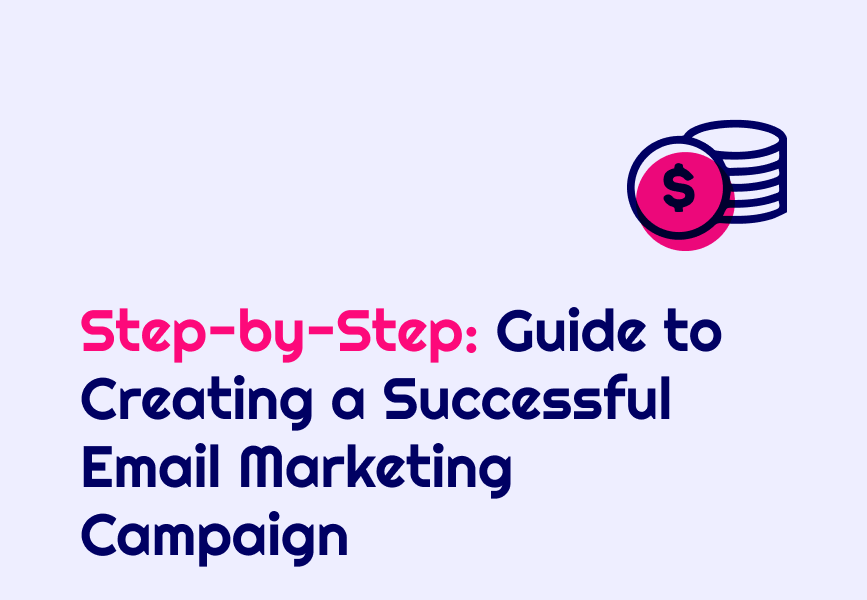Step-by-Step Guide to Creating a Successful Email Marketing Campaign
Learn how to craft a successful email marketing campaign that engages your audience and drives...

Learn how to craft a successful email marketing campaign that engages your audience and drives results.
Understanding Your Audience
To create an effective marketing campaign, it is crucial to understand your audience. Start by conducting research and gathering data about your target audience demographics, interests, and preferences. This will help you tailor your email content to resonate with your audience and increase engagement.
Consider segmenting your email list based on different criteria such as location, age, or purchase history. This allows you to send targeted emails that are more relevant to each segment, increasing the chances of conversion.
Additionally, pay attention to your audience's behavior and engagement patterns. Monitor open rates, click-through rates, and conversion rates to identify what types of emails and content are most successful. Use this data to optimize your future campaigns and improve your overall email marketing strategy.
Crafting Compelling Content
Crafting compelling content is essential for capturing your audience's attention and driving them to take action. Start by defining clear goals for your email campaign. Are you trying to promote a product, educate your audience, or nurture leads? Tailor your content accordingly.
When writing your emails, keep them concise and to the point. Use compelling subject lines that grab attention and entice recipients to open the email. Personalize your emails by addressing the recipient by name and using their past interactions or behaviors to customize the content.
Include a clear call-to-action (CTA) in your emails that directs recipients to take the desired action, whether it's making a purchase, signing up for a webinar, or visiting your website. Use persuasive language and highlight the benefits of taking the desired action to motivate your audience to engage.
Lastly, don't forget to proofread and test your emails before sending them out. Check for any grammatical errors or broken links, and ensure that your emails are optimized for different devices and email clients.
Designing Eye-catching Templates
The design of your email templates plays a crucial role in grabbing your audience's attention and conveying your brand's message effectively. Start by selecting a clean and visually appealing layout that aligns with your brand identity.
Use eye-catching visuals such as images or graphics to make your emails visually appealing. However, make sure that the images are optimized for fast loading and include alt text in case they don't load properly. Balance the use of images with well-formatted text to ensure accessibility and readability.
Choose colors and fonts that are consistent with your brand's visual identity. Use contrasting colors to make important elements, such as CTAs, stand out. Keep the overall design simple and clutter-free to avoid overwhelming your audience.
Make sure your email templates are responsive and mobile-friendly. A large percentage of emails are now opened on mobile devices, so it's important to ensure a seamless user experience across different screen sizes. Test your templates on different devices and email clients to ensure they display properly.
Consider using email marketing tools or templates that provide pre-designed layouts and responsive designs to simplify the design process.
Implementing Personalization Strategies
Personalization is key to creating a successful email marketing campaign. By tailoring your emails to the individual recipient, you can increase engagement and conversion rates. Start by collecting relevant data about your subscribers, such as their name, location, or past purchase history.
Use this data to personalize the email content and subject lines. Address recipients by their name and include personalized product recommendations or offers based on their past interactions. Leverage dynamic content to show different content blocks based on specific subscriber attributes or preferences.
Segment your email list based on different criteria and send targeted emails to each segment. This allows you to deliver more relevant content and offers to different groups of subscribers, increasing the chances of conversion.
Automate your personalization efforts by using email marketing automation tools. These tools can help you set up triggers and workflows that send personalized emails based on specific actions or events, such as abandoned cart emails or birthday greetings.
Regularly analyze and optimize your personalization strategies based on the data and insights gathered from your email campaigns. Continuously test different personalization elements to find the most effective strategies for your audience.
Measuring and Analyzing Campaign Performance
Measuring and analyzing the performance of your email marketing campaigns is crucial for understanding their effectiveness and making data-driven improvements. Start by tracking key metrics such as open rates, click-through rates, conversion rates, and unsubscribe rates.
Use email marketing analytics tools to gather data and generate reports that provide insights into your campaign's performance. Identify trends and patterns in the data to understand what types of emails and content are resonating with your audience.
A/B testing is a valuable technique for optimizing your email campaigns. Test different elements such as subject lines, CTAs, or email designs to identify what drives better engagement and conversion rates. Make data-backed decisions to refine your future campaigns.
Regularly review and analyze your email marketing metrics to identify areas for improvement and optimization. Experiment with different strategies and tactics to see what works best for your audience. Continuously iterate and refine your email marketing campaigns based on the insights gained from data analysis.
Your ultimate guide to strategic outsourcing
Subscribe for expert tips, trends, and tailored solutions.



